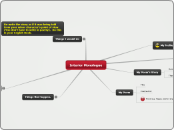Explicit instruction of skills and strategies is vital for development; activating existing knowledge, teacher modeling and scaffolding of skills, gradual release to establish student proficiency
References
References:
Beck, I. L., & McKeown, M. G. (2001). Text talk: Capturing the benefits of read-aloud experiences for young children. The Reading Teacher, 55, 10-20.
Faver, S. (2008). Repeated reading of poetry can enhance reading fluency. Reading Teacher, 62(4), 350-352.
Fisher, D. & Frey, N. (2015). Selecting Texts and Tasks for Content Area Reading and Learning. Reading Teacher, 68(7), 524-529. DOI: 10.1002/trtr.1344
Graham, S., & Harris, K. R. (2016). A path to better writing: Evidence-based practices in the classroom. The Reading Teacher, 69, 359-365. DOI: 10.1002/trtr.1432
Harris, K. R., Graham, S., Friedlander, B., & Laud, L. (2013). Bring powerful writing strategies into your classroom! The Reading Teacher, 66, 538-542.DOI: 10.1002/TRTR.1156
Kirby, R., & Bowers, N. (2012). Morphology works. What Works? Research into Practice, Ontario Ministry of Education Literacy and Numeracy Secretariat.
http://www.edu.gov.on.ca/eng/literacynumeracy/inspire/research/WW_Morphology.pdf
Knatim. Summarization 6 reciprocal teaching pt 1. YouTube. (2009, March 4). https://youtu.be/8oXskcnb4RA
Lane, H. B., & Allen, S. A. (2010). The vocabulary rich classroom: Modeling sophisticated word use to promote word consciousness and vocabulary growth. The Reading Teacher, 63, 362-370.
Mayer, R. (2008). Learning to write. In R. Mayer, Learning and Instruction (2nd. Ed. pp. 120-151) Upper Saddle River: Pearson.
McKeown, M. G., Beck, I. L. (2011). Making vocabulary interventions engaging and effective. In R. E. O’Conner, & P.F. Vadasy, (Eds.). Handbook of reading interventions (pp. 138-168). New York, NY: Guilford Press.
Pollard-Durodola, S., & Gonzalez, J. E., Simmons, D. C., Davis, M. J., Simmons, L., & Nava-Walichowski, M. (2011). Using knowledge networks to develop preschoolers’ content vocabulary. The Reading Teacher, 65(4), 265-274. DOI: 10.1002/TRTR.01035
Rasinski, T. V., & Samuels, S. J. (2011). Reading fluency: What it is and what it is not. In S. J. Samuels & A. E. Farstrup (Eds.), What research has to say about reading instruction (4th ed., pp. 94-114). Newark, DE: International Reading Association.
Reading Rockets. (2014, April 16). Reading as Dialogue [Video]. YouTube. https://www.youtube.com/watch?v=yNi2huTBaP8
Stahl, K. A. D. (2004). Proof, practice, and promise: Comprehension strategy instruction in the primary grades. The Reading Teacher, 57, 598-609.
New learning written in green boxes and connections made between components
are marked with green, dotted lines.
Literacy Development
Tram Do Skalinski
Speaking
read alouds
Dialogic Thinking (Reading Rockets, 2014)
Text Talk (Beck & McKeown, 2015)
conversations at home
teacher led mini lessons
presentations
peer learning
small group interactions
student-teacher conferences
partner shares
community meetings
Writing
writing process
self-regulating
(Harris et al., 2013)
goal setting SRSD
students write about what they know or have researched
(Mayer, 2008)
30 minutes each day (Graham & Harris, 2016)
3 components (Mayer, 2008)
reviewing
detection and correction of errors,
internalize revision process
translation
converting ideas into words
planning
development and organization of ideas
organization
voice
word choice
"word consciousness" (Blachowicz et al., 2006)
opportunities to apply new language
(Land & Allen, 2010)
enhance language as year progresses;
"friendly explanations" - defining words in
everyday connected language
(Land & Allen, 2010)
explicite instruction eg.
Sample Instructional Sequence
(McKeown & Beck, 2011)
morphology
Structured Word Inquiry
(Kirby & Bowers, 2012)
sentence fluency
grammar
convention
ideas
pre-writing
drawings
scribbling
understanding print holds meaning
alphabetic knowledge
Listening
language patterns
vocabulary
comprehension
oral language
Reading
Comprehension
Teacher-led Questioning
QAR approach (Stahl, 2004)
On My Own
Author and You
Think and Search
Right There
lower to higher order questions
Content areas
vocabulary and concepts built around thematic units (Pollard et al., 2011)
information and narrative text concepts and vocabulary (Pollard et al. 2011)
Text consideration (Fisher, 2015)
Reciprocal Teaching (Knatim, 2009)
clarifying
synthesizing
inferring
summarizing
rereading
questioning
visualizing
existing knowledge
predicting
Fluency
MAPPS (Ransinski & Samuels, 2011)
Model fluent reading
Assisted reading for support
Practice reading wide and deep
Phrasing of words in meaningful groups
Synergy to make the whole greater than the sum of its parts
automaticity
prosody (Rasinski, 2011)
assisted reading
repeated reading
modeling fluent reading
Morphology
Structure Word Inquiry/Scientific Word Investigation
(Kirby & Bowers, 2012)
etymology
vocabulary development
decoding skills
prefixes, suffixes,
base/root words
pre-reading skills
phonemic awareness
substitution
addition/deletion
segmentation
blending
isolation
phonological awareness
phoneme
rhymes
onsets
syllables
understanding text holds meaning
text awareness
teacher read aloud
independent
self-monitoring strategies
shared
guided









